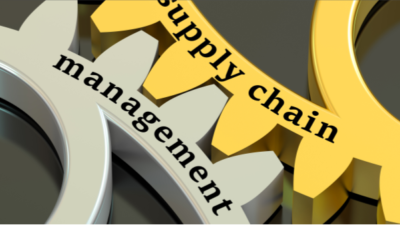TACHAN
- 8 August, 2023
- by Admin
Risk Management in the Supply Chain: Importance and Mitigation Strategies in Vietnam
Risk management plays a critical role in ensuring the resilience and continuity of supply chains in Vietnam. With its dynamic business environment and exposure to various risks, effective risk management is essential for businesses operating in the country. In this post, we will highlight the importance of risk management in Vietnam’s supply chain and discuss key areas of risk, including supply chain disruptions, geopolitical risks, natural disasters, and mitigation strategies to enhance supply chain resilience.

Importance of Risk Management in Vietnam’s Supply Chain:
Supply Chain Disruptions:
Supply chain disruptions can occur due to various factors, such as changes in regulations, labor strikes, transportation delays, or supplier bankruptcy. These disruptions can result in production delays, inventory shortages, and customer dissatisfaction. Effective risk management enables businesses to identify and mitigate potential disruptions, ensuring the continuity of supply and minimizing the impact on operations.
Geopolitical Risks:
Vietnam’s business landscape is subject to geopolitical risks, including changes in government policies, trade disputes, and regional tensions. These risks can impact supply chain operations, including import/export regulations, tariffs, and market access. Risk management helps businesses stay informed about geopolitical developments, anticipate changes, and develop contingency plans to minimize disruptions and adapt to evolving market dynamics.
Natural Disasters:
Vietnam is prone to natural disasters, such as typhoons, floods, and earthquakes. These events can cause significant damage to infrastructure, disrupt transportation networks, and impact the availability of raw materials or finished goods. Risk management involves proactive measures such as disaster preparedness planning, diversifying suppliers and distribution networks, and implementing robust business continuity plans to minimize the impact of natural disasters on the supply chain.
Mitigation Strategies for Risk Management in Vietnam’s Supply Chain:
Risk Identification and Assessment:
Conduct thorough risk assessments to identify potential risks and vulnerabilities within the supply chain. Evaluate the likelihood and potential impact of each risk, considering factors such as supplier dependencies, transportation routes, and regulatory changes. Regularly review and update risk assessments to stay proactive in managing emerging risks.
Diversification of Suppliers and Partners:
Reduce the risk of supply chain disruptions by diversifying suppliers and partners. Engage multiple suppliers for critical components or raw materials to mitigate the impact of supplier disruptions. Develop relationships with alternative logistics providers and warehousing facilities to ensure flexibility in the event of transportation or storage challenges.
Supply Chain Visibility and Collaboration:
Enhance supply chain visibility and collaboration to effectively manage risks. Implement technology solutions, such as supply chain management systems and real-time tracking, to gain visibility into inventory levels, order statuses, and transportation movements. Foster collaboration with suppliers, logistics providers, and other stakeholders to facilitate information sharing, improve coordination, and enable timely responses to potential disruptions.
Business Continuity Planning:
Develop comprehensive business continuity plans to ensure the resilience of the supply chain. Establish protocols for risk mitigation, crisis management, and communication in the event of disruptions. Test and review these plans regularly to ensure they remain up to date and effective in addressing potential risks.
Supplier Risk Management:
Implement robust supplier risk management processes, including regular assessments of suppliers’ financial health, quality management systems, and contingency plans. Develop alternative sourcing strategies to reduce reliance on single suppliers and establish clear contractual agreements with risk mitigation clauses.
Insurance Coverage:
Consider appropriate insurance coverage to protect against supply chain risks, such as business interruption insurance, cargo insurance, and trade credit insurance. Engage with insurance providers to assess the specific needs of the supply chain and obtain appropriate coverage to minimize financial losses in the event of disruptions.
Effective risk management is crucial for the resilience and continuity of supply chains in Vietnam. By proactively identifying and assessing risks, diversifying suppliers and partners, enhancing supply chain visibility and collaboration, developing business continuity plans, and implementing robust supplier risk management processes, businesses can mitigate the impact of supply chain disruptions, geopolitical risks, and natural disasters. A holistic and proactive approach to risk management ensures the agility and long-term success of supply chains in Vietnam’s dynamic business environment.
- Tags:
Related news









